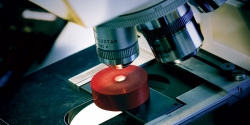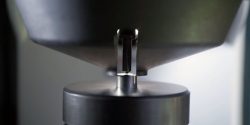Qualità EN
Trafilspec-ITS is equipped with the most modern equipments existing in commerce for non-destructive testing on both bars (drawn/ground) and drawn wires in coils.
Controls effected by Trafilspec-ITS are the following:
- Defectomat control on bars and coils: non-destructive control effected through eddy-current equipment that allows detecting superficial cracks with transversal orientation, such as scabs, cracks, holes.
- Circograph control on bars: non-destructive control effected with equipment working with rotating probes that allows to detect superficial defects with longitudinal orientation as us rolling laps, tension cracks and drawing defects.
- non-cranking control: non-destructive control effected with magnetic-inductive equipment that allows to check the material exchange (o mixing) and the heat treatment.
- magnetoscope testing: non-destructive control effected with magnetic equipment that allows to detect superficial defects with transversal and longitudinal orientation.
Controls are effected according to European Norm UNI EN 10277-1:2000 or according to customer's specifications.
UNI EN 10277-1:2000 (products in bars)
Class of defect According to EN 10277-1
Diameter or key [mm]
Max. defect admitted
Max. % of bars with defects over the limit (1)
Shape (2)
Round
Exagon
Square
Class of defect According to EN 10277-1
1Diameter or key [mm]
up to 15from 15 to 100
Max. defect admitted
0.3 mm2% Diameter or key
Max. % of bars with defects over the limit (1)
4%Shape (2)
Round
+Exagon
+Square
+Class of defect According to EN 10277-1
2Diameter or key [mm]
up to 15from 15 to 75
from 75 to 100
Max. defect admitted
0.3 mm2% Diameter or key
1.5 mm
Max. % of bars with defects over the limit (1)
1%Shape (2)
Round
+Exagon
+(<= d 50 mm)
Square
+(<= d 20 mm)
Class of defect According to EN 10277-1
3Diameter or key [mm]
up to 20from 20 to 75
from 75 to 100
Max. defect admitted
0.2 mm1% Diameter or key
0.75 mm
Max. % of bars with defects over the limit (1)
1%Shape (2)
Round
+Exagon
-Square
-Class of defect According to EN 10277-1
4Diameter or key [mm]
up to 100Max. defect admitted
Free of defectsMax. % of bars with defects over the limit (1)
0.2%Shape (2)
Round
+Exagon
-Square
-(1) The last column shows the quantity of defective product that cannot be detected.
As well for controlled material this value cannot be zero because there are no controlling instruments granting absolute reliability. Trafilspec-ITS is anyway always engaged in the improvement of its own controlling devices to give customers the best reliability.
(2) + means that the shape is available in the corresponding classes, - means that the shape is not available in the corresponding classes.
The constant increasing quality requirements of its customers and the utmost competitiveness of global markets have deeply pointed out the will of Trafilspec-ITS to look for a continuous improvement and an always precise planning of its investments in order to reach a complete satisfaction of its customers in term of quality, on-time deliveries and high professionalism either in the projecting stage or after-sale services.
Our modern and qualified equipments allow us to reach high quality products and precision which represent an important guarantee for our customers.
The aim of achieving always better products from a quality and performing point of view has led to the setting up of Trafiltest S.r.l., a laboratory operating in full autonomy, featuring a complete range of equipments designed to ensure the final quality of the products of Trafilspec-ITS.
The testing effected in our laboratory are the following:
- Brinnel, Rockwell and Vickers hardness: this is the resistance that a material opposes to let it scratch, penetrate or get it into, from an harder material; this represents the attitude of a mechanical component to support high load and wear-resistance.
- Tensile testing (Rm, Rp 0,2, A5%): this is the capacity of the material to support high loads, coming from its employment.
- Metallographic examinations: the metallographic test allows to check structure, inclusions and decarburization.
- Spectrometer analysis: the spectrometer test allows to state the chemical analyses of the steel and trace the charge it belongs to.







 Download 2014 Catalogue
Download 2014 Catalogue